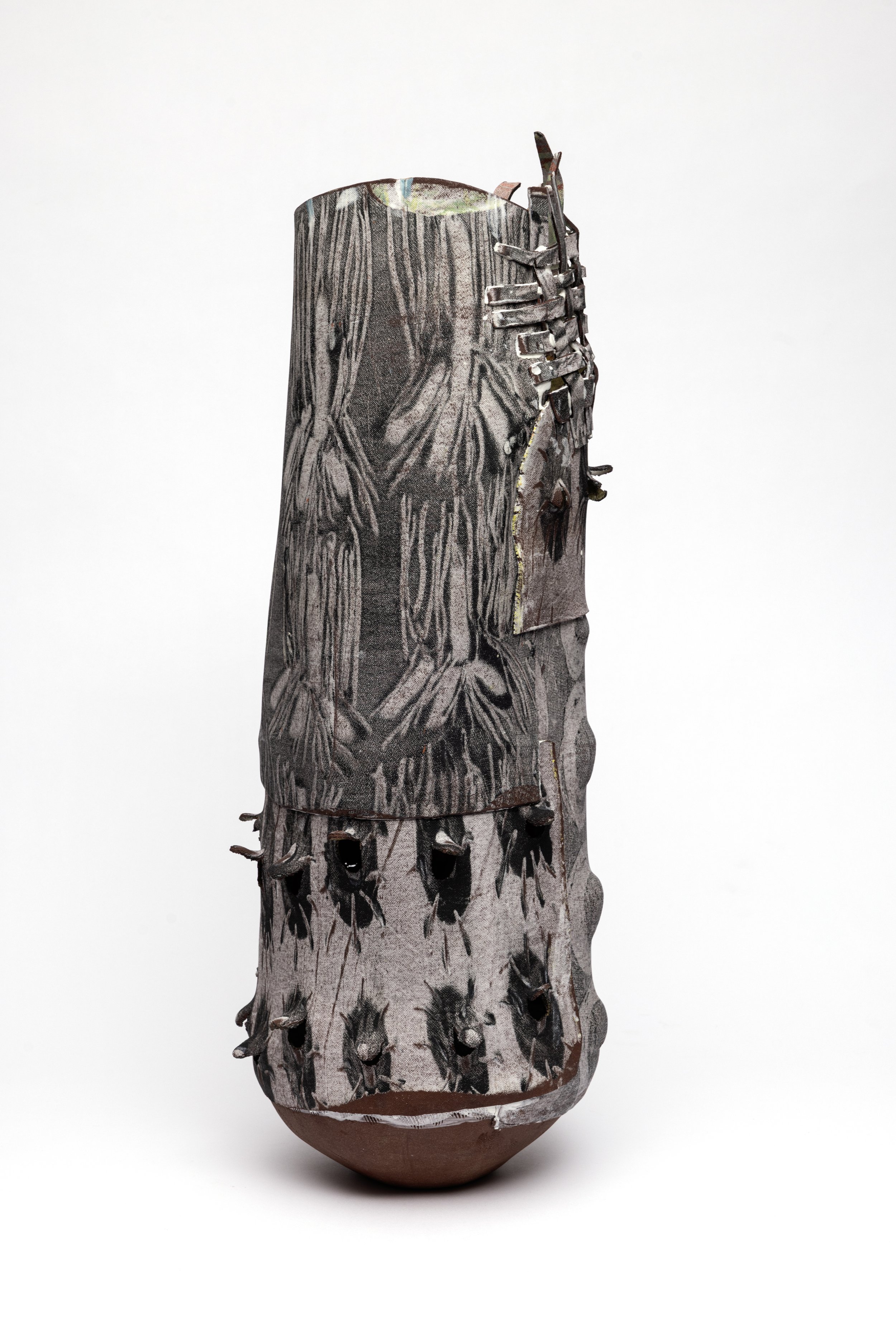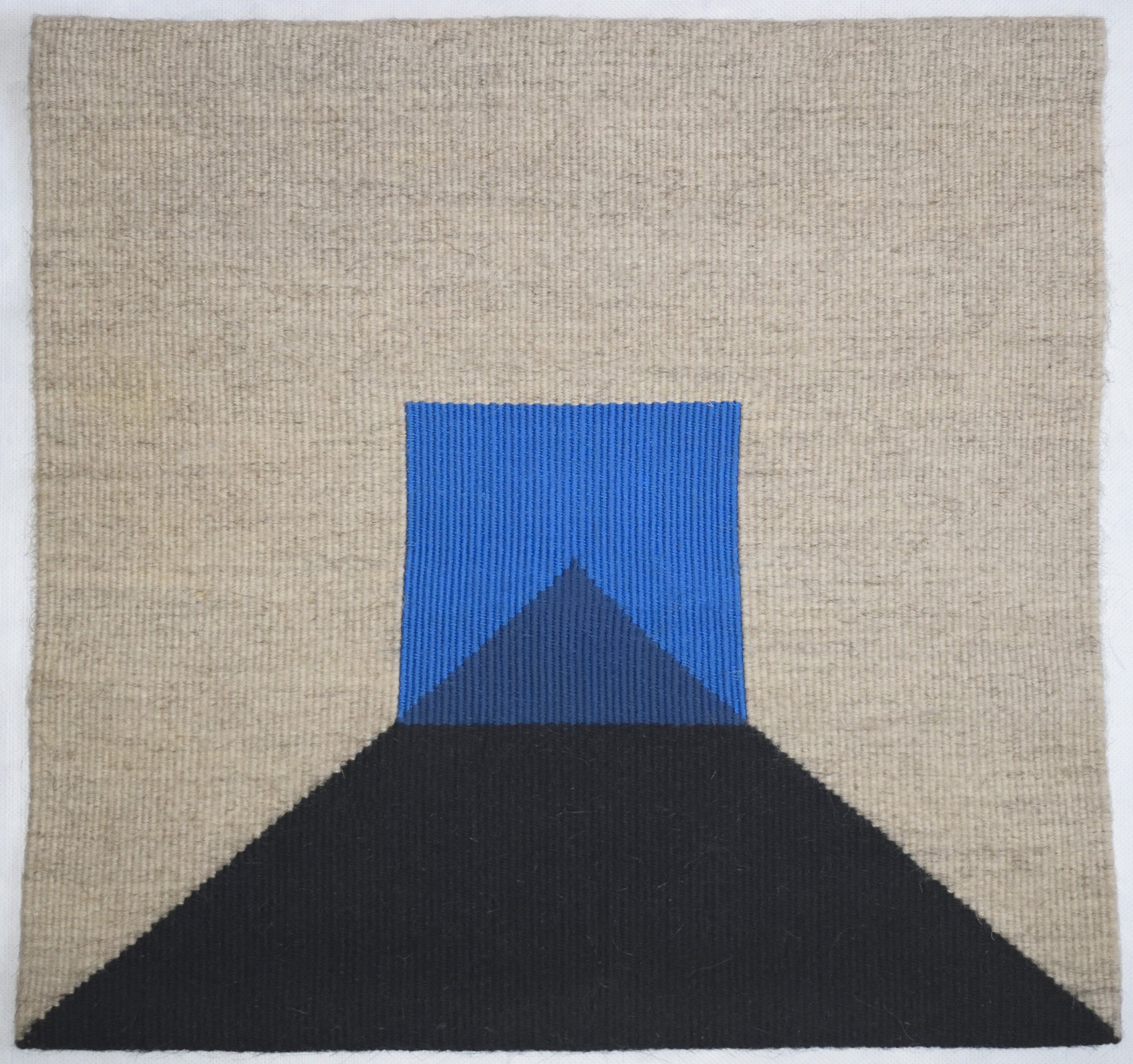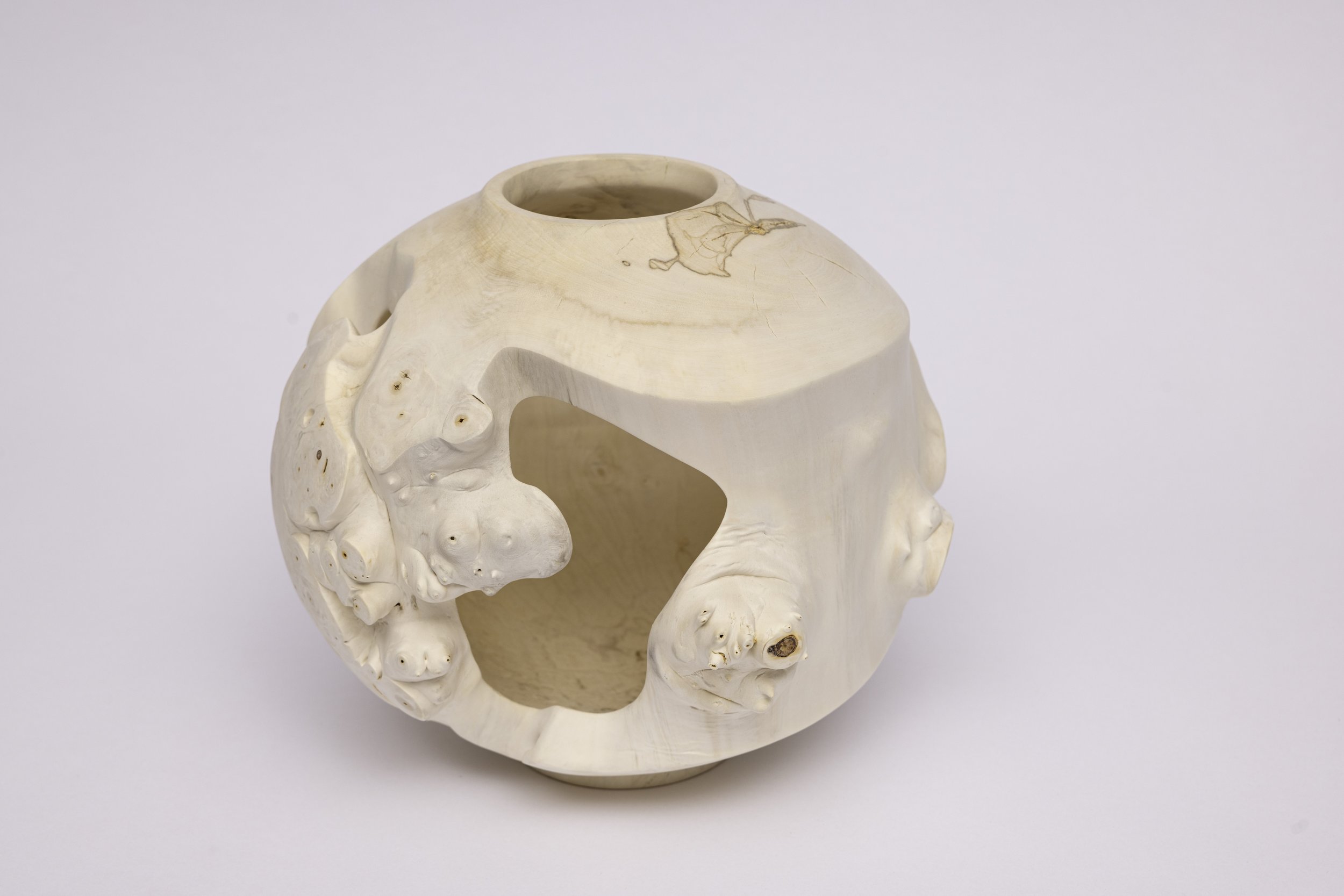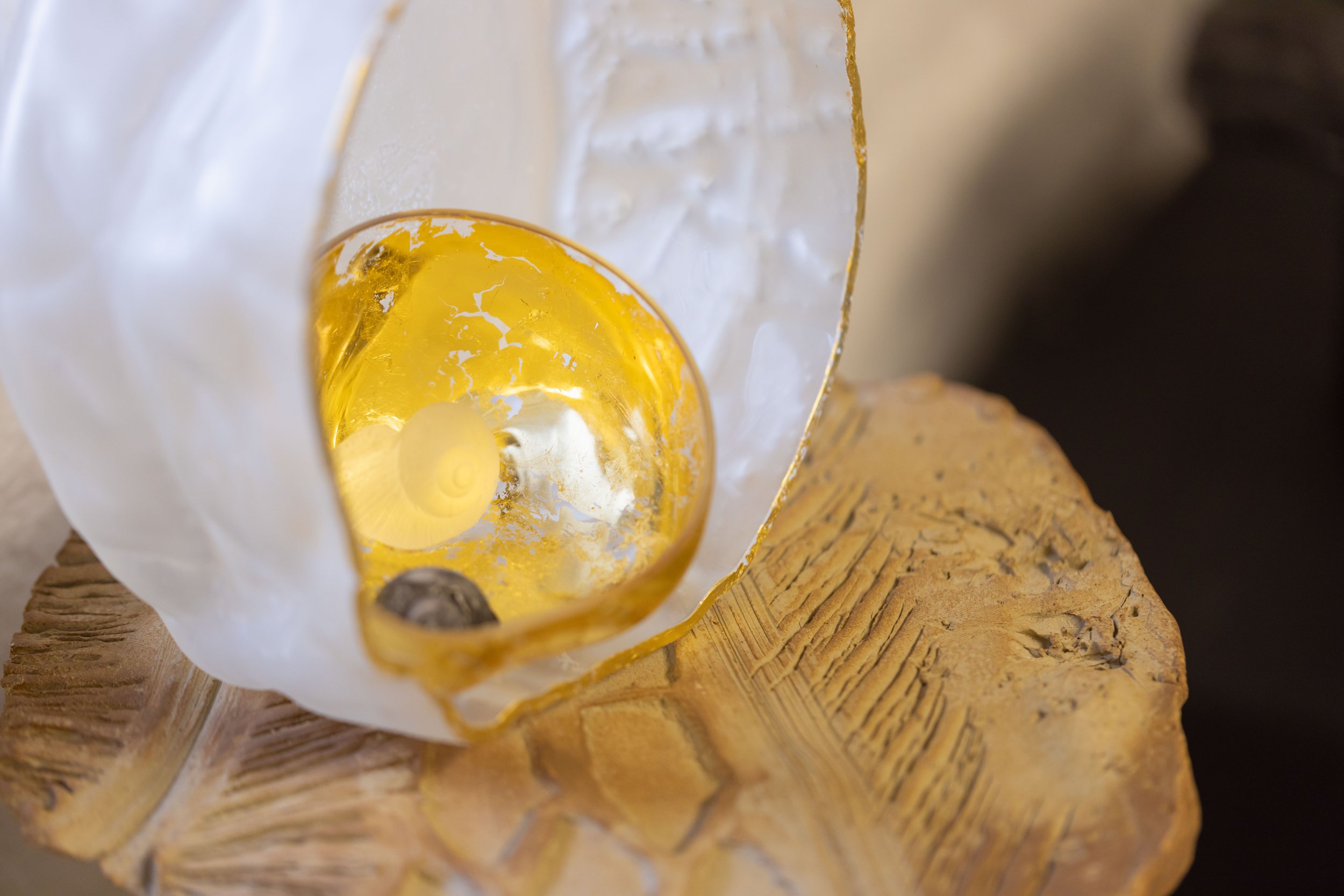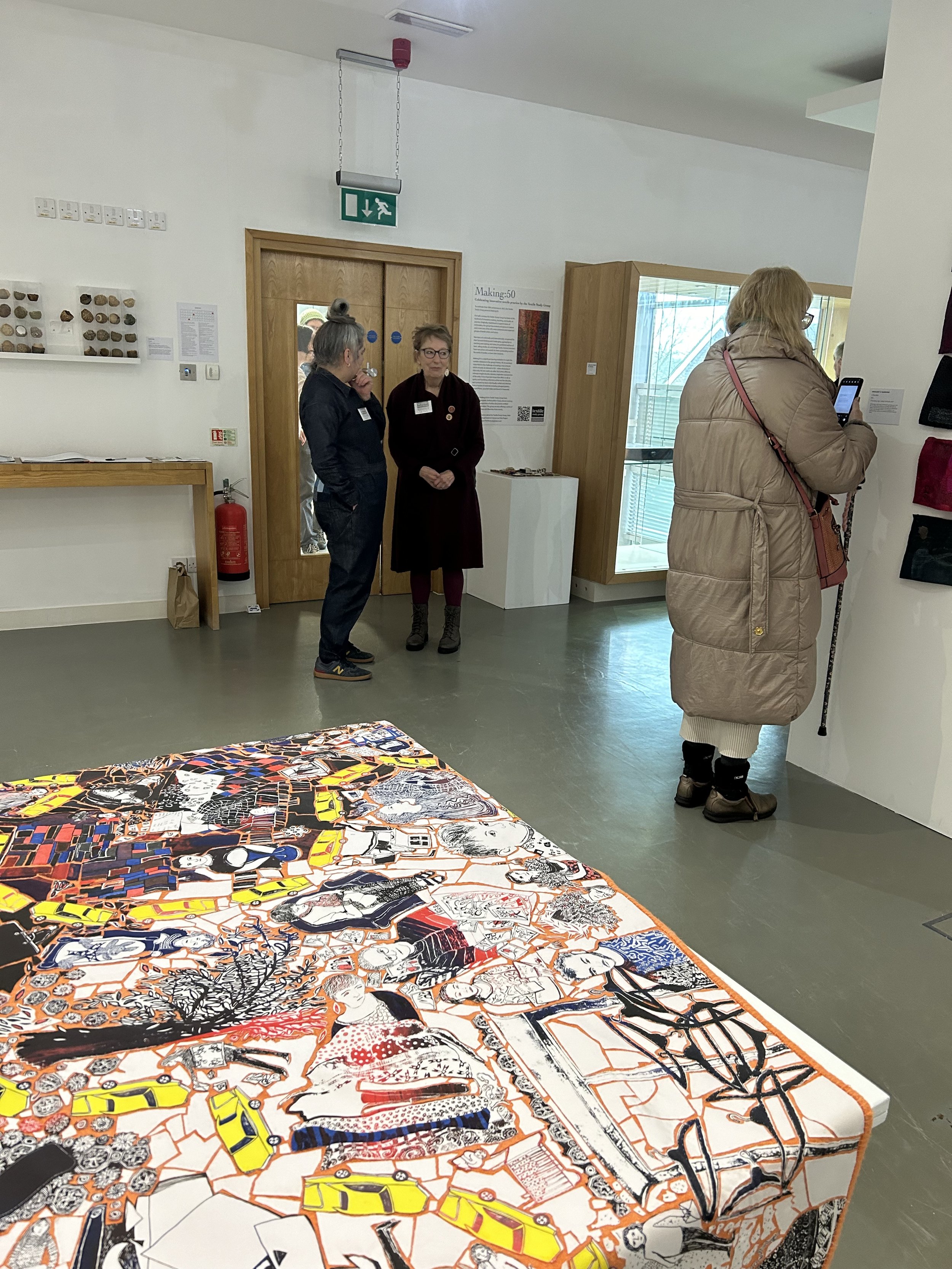MOVING FORWARD: Tim Parry-Williams
/Trustee: 2008 – present
Acquisitions: 2008 – present
The Crafts Study Centre holds a rich and diverse collection of objects that exemplify not only high degrees of material and practical understanding behind their creation but also the conceptual and creative vision of their makers. These many ‘masterpieces’ can stand together to describe and define the development of modern craft culture over the period of their collecting. However, perhaps of equal significance, are the many lesser known supporting ‘artefacts’, which augment and facilitate a deeper understanding of individual practices by revealing the foundations and shifts of thinking, and even the professional, occasionally personal lives, of the people behind the objects.
Sample book, Susan Bosence: a record of her hand block printing and resist dyeing, compiled by Anne Hinkins in 1995 showing the design France ‘82. Susan Bosence and Anne Hinkins
The rationale for my selection has therefore been to highlight examples from the collection which might both reveal some of the intangible knowledge underpinning the work, but also the wider activity and, indeed, common connectivity of the makers.
With ever-increasing digitisation of both the doing and sharing of practices, it is easy to forget or fully appreciate the simple forms and intrinsic values of traditional record making or documentation. Notebooks, sample books and sketchbooks, both private and public, provide direct insight into the breadth and depth of knowledge, and of wider thinking practices. Testing of principles and outcomes in the use of fibre, dyestuff, structure or pattern are evidenced in meticulous detail for accurate replication or interpretation (Phyllis Barron and Dorothy Larcher, Rita Beales, Susan Bosence: sample books). Best-practice techniques for the tying of knots as part of a loom set-up are exquisitely illustrated for workshop management purposes (Alice Hindson), while pen and ink sketches convey the importance of direct drawing as a method of creative contemplation (Bernard Leach: sketches).
Sketches of pots on an envelope by Bernard Leach. Bernard Leach archive. BHL/1049
Notebook, Weaving notes 1925 – 1929, by Alice Hindson containing notes made when she was working in Luther Hooper’s workshop. Alice Hindson 2002.19
Objects and artefacts also reveal the literal and philosophical relations of like-minded makers and thinkers, often sustained over many years and transcending international division. Personal correspondence provides insight into and reflection on developments in regional craft culture (Leach and Soetsu Yanagi: letters), while other objects represent primary evidence of closely shared interests through co-creation (Peter Collingwood and Junichi Arai: bracelet).
Some of the less obvious, iterative works of makers actually reflect a tenacity and pragmatism of practice in successfully making a living from a craft (Lucie Rie: necklace), while a nod to the broken or incomplete object highlights the vulnerable and sometimes undefined nature of the singularly crafted piece which, while in an ‘imperfect’ or silent state, still retains every intent of the hand of its maker (Elizabeth Peacock: half- blouse, Rie: pot).
Bowl with a uranium yellow glaze and a band of manganese around the rim. Lucie Rie. P.74.80
Necklace with press-moulded ceramic buttons, 1950s. Lucie Rie. P.91.1
Hand-spun Nigerian cotton blouse half, c .1930s. Elizabeth Peacock. T.74.66
My selection also represents various inter-connectivity between objects and makers in the collection and resonances of personal background, training and practice: Hindson’s notes on a draw- loom that would later be the tool of Amelia Uden, subject tutor at Farnham; linen weaver Beales, and Barron and Larcher, with their Gloucestershire backgrounds; Bosence, as a key founder of the textiles course at Farnham; Leach, Collingwood and Arai, and sustained links to Japan.
Duplicate page from Volume 1 of Phyllis Barron 1890 – 1964 Dorothy Larcher 1884 – 1952: A record of their block-printed textiles compiled by Robin Tanner in the 1970s, showing the design French Stripe. Phyllis Barron, Dorothy Larcher and Robin Tanner. 2001.1.c.56
The task of selecting from so many wonderful and important craft objects was more than daunting, not least where to begin, and where to end? But there was duty, privilege and joy in celebrating the many treasures of such a collection.
Professor Tim Parry-Williams is a studio weaver and Professor of Art:Textiles at the University of Bergen in Norway.












